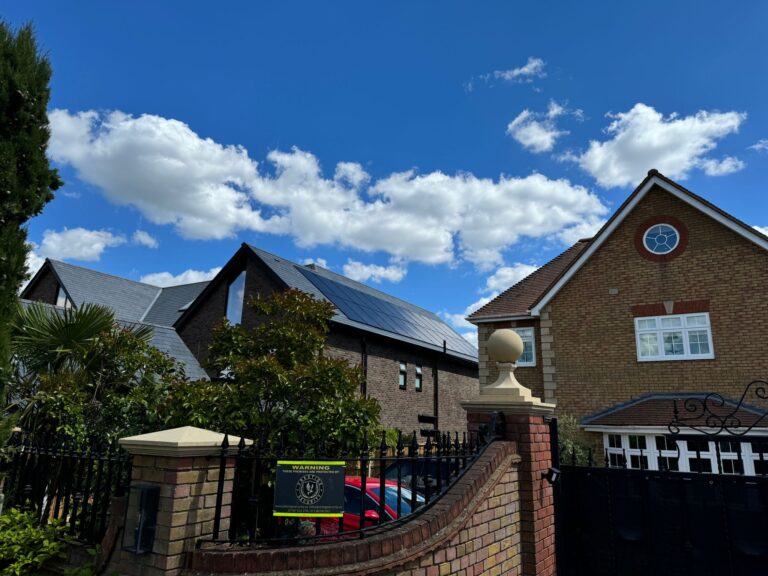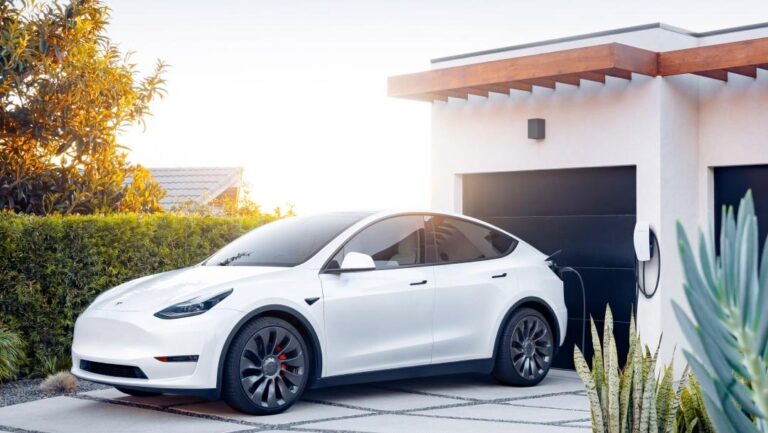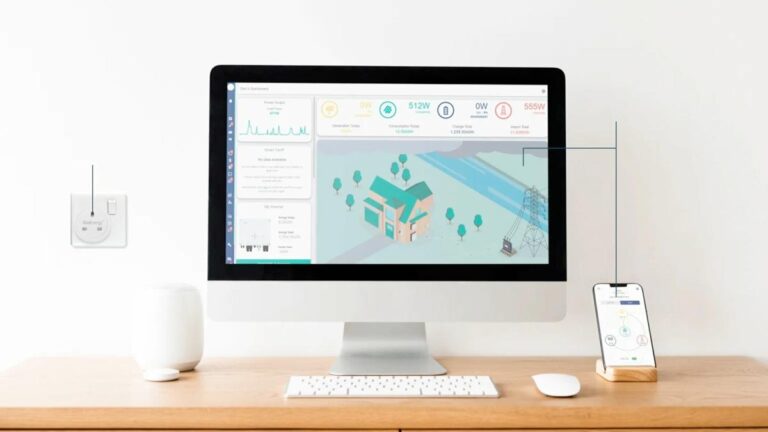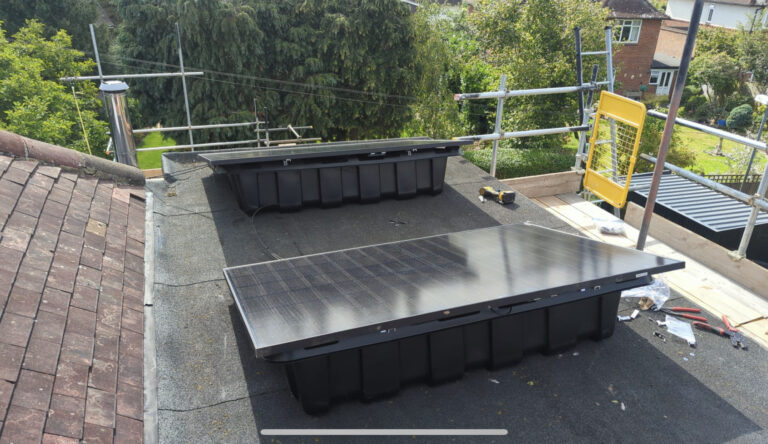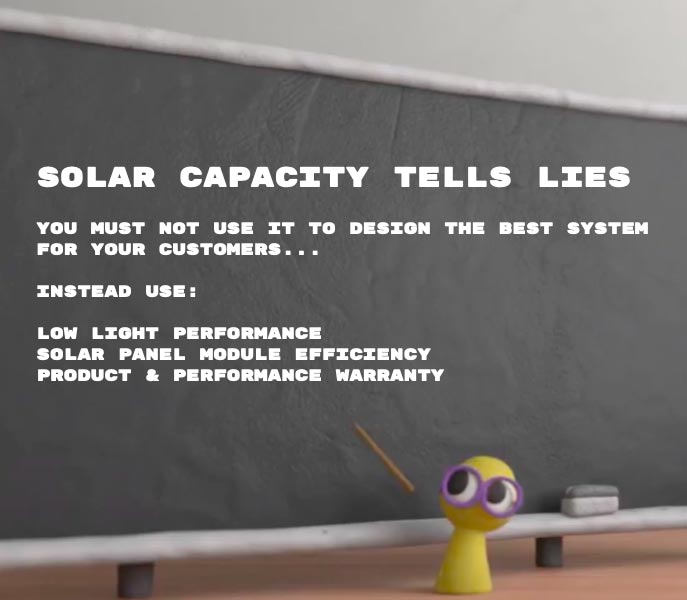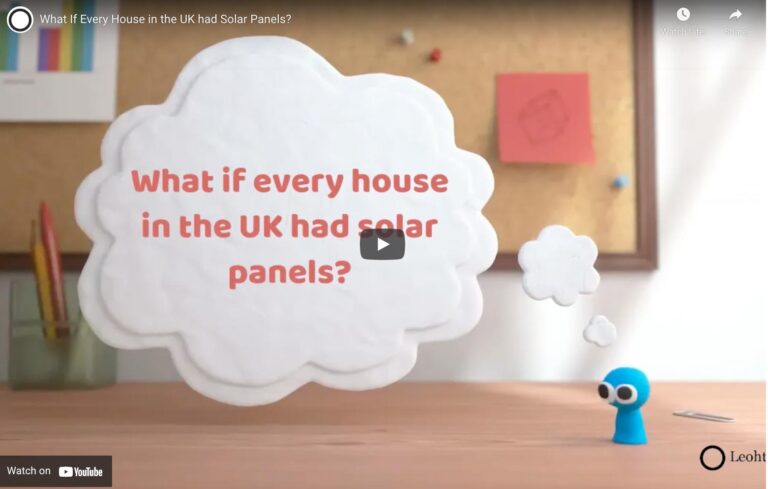A 4 kW solar sytem can be a good option for a household with average energy consumption.
4kW solar systems are generally more affordable, produce as much electricity as the average household uses per year and will fit onto most roofs. However, If you have enough roof space, a 4 kW solar system might not be the best choice for your home now that exporting solar generation is so attractive, given the low marginal cost of adding additonal panels, even if your electricity usage is lower. By following poor advice regarding maximum system sizes and output limits, you could cost yourself £000’s without knowing it.Compare the cost & savings of a 4kW Solar system below to other solar system sizes.
| System size | Cost | Annual generation | Lifetime savings | Net savings | Difference in savings |
|---|---|---|---|---|---|
| 4.38 kW | £8070 | 4298 kWh | £22,831 | £14,761 | £0 |
| 5.11 kW | £8367 | 4912 kWh | £24,259 | £15,892 | +£1131 |
| 6.57 kW | £8963 | 5898 kWh | £26,505 | £17,542 | +£2781 |
| 7.3 kW | £9260 | 6310 kWh | £27,425 | £18,165 | +£3404 |




Negative electricity bills
Generating more energy than you use could turn your electricity bills negative – like the customers below.
The marginal cost of adding panels to a 4 kW solar system is negligible, you may as well use the space available and go larger.

History of a 4kW Solar system.
Why is a 4kW solar system such a popular option? To answer this question, we must look back to when the Feed-in Tariff was first introduced. The highest level of support under the old Feed-in Tariff subsidy was in the 0-4kW band. At the time, solar panel sizes maxed out at roughly 250W per panel, which made it nice and simple as 16 panels x 250W = 4 kW solar system.
Therefore, the largest system often sold to residential customers would be a 4kW solar system as it didn’t make financial sense to go any larger and have the subsidy rate cut in half.
Today, modern panels of similar size go up to 400W, a 16-panel system today would be 6.4 kW.
As the Feed-in Tariff subsidy came to an end in 2019 and is no longer needed, there is no reason why you should limit yourself to installing a small 4kW solar system.
Take control of your energy supply
When should I install a 4 kW solar system?
- If you have limited roof space where the maximum amounts to 10 panels or 4kW.
- Budget constraints – a 4kW solar system will allow you to install a cheaper inverter as there is less power to handle and less panels are needed.
It will always be more cost-effective to go for a larger system as the marginal cost of adding a panel to the installation is much lower. You’ll also generate more energy.
Why are 4 kW solar systems still so popular?
- The public is much more familiar with a 4 kW solar system – it’s much easier to sell something that a customer is already familiar with.
- Productisation – creating a standard offering for your salespeople to sell.
- 4 kW solar system capacity is often confused with the grid’s 3.68 kW AC output limit, the two are unrelated and shouldn’t be mixed up but they often are.
- You can use a cheaper inverter as there is less power being generated/converted and no AC clipping (when DC generation exceeds the AC rated output of the inverter, the power is ‘clipped’ either the inverter uses the Maximum Power Point Trackers to lower the Wattage or the power is lost as heat).
Is a 4kW solar system the maximum size for homes? What is the 3.68 kW grid limit?
3.68 kW is the AC output limit per phase before permission is required from the DNO (District Network Operator). The goal should be to maximise the amount of time your solar panel system’s inverter is outputting 3.68 kWh.
A 4 kW solar system’s inverter will output 3.68 kWh when irradiation (light) is above 920Wh/m2.
A 7 kW solar system’s inverter will output 3.68 kWh when irradiation is above 525Wh/m2.
To maximise the output when not seeking permission and where roof space is not limited, a Huawei hybrid inverter combined with Huawei optimisers on each panel can handle a 10 kW solar system.
A 10 kW solar system’s inverter will output 3.68kWh when irradiation is above 368Wh/m2.
The average irradiance in the UK is 101Wh/m2.
Sacrificing some generation through AC clipping during the middle of the day in summer months, when irradiation is at its highest, during this time generation is likely to exceed usage anyway, to maximise production throughout the rest of the year (90% of daylight hours) when generation will likely be more useful is the advice that we would give to everyone considering installing a 4 kW solar system.
Unless you have limited roof space a 4 kW solar system is unlikely to be the best choice for your home. By following bad advice regarding system sizes and output limits, you could cost yourself £000’s. A 4kW solar system price would then not be so affordable.
How many panels in a 4kw solar system?
In a 4kW solar system, the number of panels required depends on several factors, including the wattage of the individual solar panels and their efficiency. To determine the number of panels, we must consider the system’s total capacity (4kW) and the average wattage of the solar panels available at the time of installation.
For example, if we assume each solar panel has an average wattage of 300W, we can calculate the number of panels needed by dividing the total capacity (4kW) by the wattage per panel (300W).
Number of panels = 4,000W ÷ 300W ≈ 13.33
Since you cannot have a fraction of a solar panel, you would need to round up to the nearest whole number. Therefore, a 4kW solar system using 300W solar panels would require approximately 14 panels.
It’s important to note that the actual number of panels may vary depending on factors like the geographic location, orientation, and shading at the installation site. A professional solar installer like Leoht can provide a more precise estimate based on these factors.
How much electricity does a 4kw solar system produce per day?
The amount of electricity a 4kW solar system produces per day depends on various factors such as location, weather conditions, and the orientation of the solar panels. On average, a 4kW solar system can generate around 16-20 kilowatt-hours (kWh) of electricity per day.
Solar panels operate at peak efficiency during clear, sunny days when they receive direct sunlight. However, on cloudy or overcast days, their output may be lower. Additionally, the angle and direction the panels are installed can affect their daily production.
To get a more precise estimate of how much electricity a 4kW solar system would produce in your specific location, you can use solar calculators or consult with a professional solar installer like Leoht. They can consider local weather patterns and other variables to give you a more accurate daily production estimate for your solar system.
